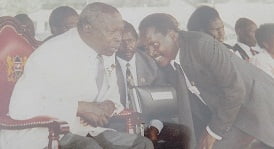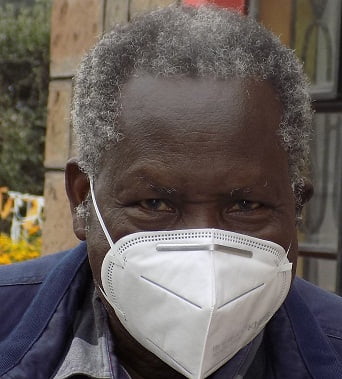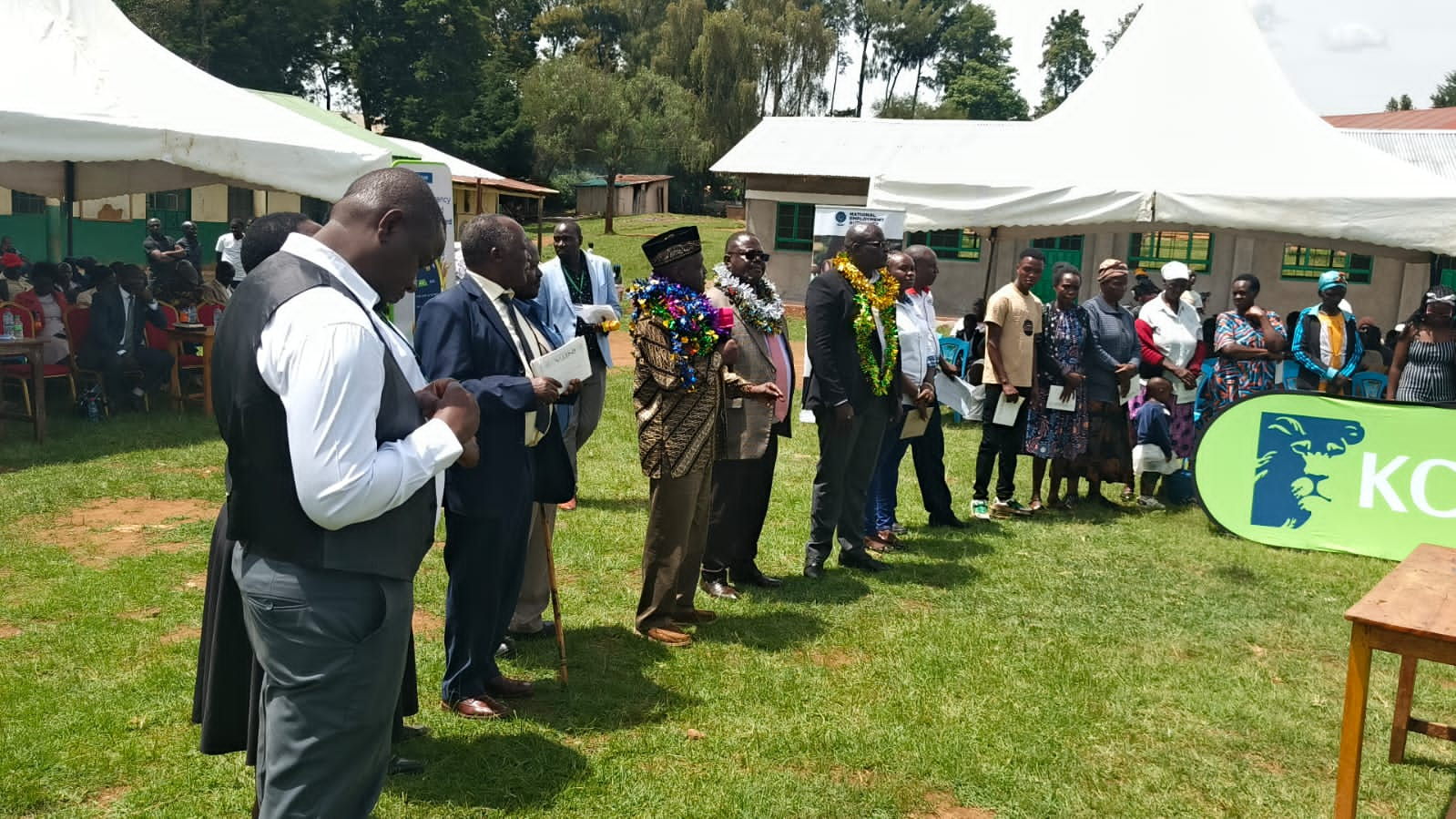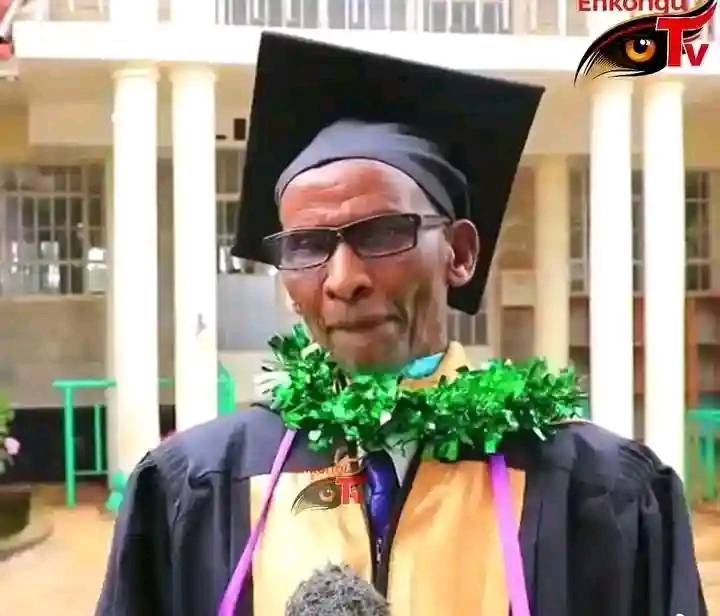By Azael Masese
John Samuel Thula Kamunchuluh describes Treasury CS Ukur Yatani as the quietest and most attentive student while at Kabarnet High School.
At the same school, he also mentored Justice Mweresa Eboso, lawyer and politician Ekuru Aukot, and Standard Deputy Editorial Director Kipkoech Tanui. At Meru High School, where he served as the Deputy Head Master, he taught former Attorney General Githu Muigai History, who he says, demonstrated his critical thinking prowess during debates or class discussions.
Every school JST Kamunchuluh, as he is popularly known, served as headmaster immediately reported improved performance. When he left, incoming principals found it challenging to cope and rarely lasted long.
The brilliant results at Buriereri between 1980 and 1981 and Miathene Secondary schools, where he served between 1982 and 1985, points to his success.
When the late President Daniel Arap Moi, who served as the board chair at Kabarnet High, wanted a qualified school head to take the institution to the next stage, Kamunchuluh emerged the best.
“The Provincial Education Officers were asked to pick the best three headmasters from each of the eight provinces and forward their names to TSC,” he recalls. His name found its way to State House. During a visit to the school on a Saturday morning, Moi expressed satisfaction with Kamunchuluh and assured students the new head was a headmaster per excellence and expected to reciprocate through improved performance.
Moi underscored the need to observe discipline that was an issue as students had regular visits to the local market during games time from 2 pm to 4 pm on weekends. “I stopped the daily outings but allowed them to go out only on Saturdays from 2 pm to 4 pm.”
The University of Nairobi Bachelor of Arts (Education) graduate spelled out his performance targets and told them the kind of results he had posted in his previous stations. Kamunchuluh, who went to Marsabit High for his O levels and later Kangaru High for his A levels, pointed out the students’ weakness. He founded the Baringo District Mock to address some of the challenges.
“It was introduced aiming to create competition and, in turn, improve performance as Kabarak High, and Kabianga School joined,” he says. The examinations were set at Kabarnet High and Moi met the printing cost.
The performance did not disappoint as Moi regularly visited the school and loaves of bread, and a bull for slaughter came in handy. “I am happy with the number of students who went to university to pursue engineering, medicine, law, architecture, and land economics, reflecting the brilliant results reported at my time,” he says.
A classmate to TSC Chair Lydia Nzomo, Kamunchuluh, helped start Kabarnet public library, next to the school to enable students to conduct private studies and stock books Moi had bought. He also started agribusiness, providing students with a piece of plot to plant cabbages, kales, potatoes, or onions for sale and generate pocket money. He convinced Moi to buy dairy cattle and started a tree nursery.
In 1992, Kamunchuluh, who retired in 2005, was transferred to Nanyuki High School but rerouted to Ikuu Boys. In the previous year’s results, Ikuu was at position 98 nationally, but come 1993, it was position 25, the best result ever reported by the school.
“My approach is to be very close to the students. Besides, I led by example by teaching the candidates,” he says. He motivated teachers who posted a better mean score by gifting them a month’s salary from his pocket, and this created stiff competition from the teachers and made him acceptable to the teaching staff. He always emerged top.
At Ikuu, he put up four permanent dormitories and completed a library that had stalled for years and planted two acres of tea. Due to his stellar performance, he was deployed to Moi Forces Academy, Nairobi, in 1996, where Moi served as the school’s patron. MFA, as is known, had suffered a lot, and the turnover of school heads was very high. Founded in 1980, for the children of the armed forces, it required an excellent Principal from TSC, and that is how Kamunchuluh found his way to the school.

Several projects had stalled, and discipline was wanting as student truancy, and abuse of drugs was rampant. His student administration was unique as he chose the best student leaders from among the top 20 best-performing students. “Within a week or so, I had a list of all smokers, which saw them change their behaviours.” He is the longest-serving principal for the school.
He says he knew his students by names and admission numbers. “To succeed as a school principal, be a bit mysterious and do not become a common book for anyone to predict,” he argues.
He fenced the school compound with barbed wire, chain link, and concrete poles and stopped sneaking. When he left in 2005, the school had a mean score of 9.00, and the country’s top KSCE candidate came from the school.
Kamunchuluh was to retire in 2003 at 55, but the armed forces requested an extension of his term. Even after serving his extended term of two and three months, former TSC Commission Chair Ibrahim Hussein asked him to extend his service at Garbatullah High or Shimo La Tewa but refused.
At his Ruai home, he says that life after retirement can be disturbing, and if one cannot cope, many die within the first five years.
“It is frustrating if there is nothing to do to match your routine, and if one is about to retire, the best thing is that you look for something to occupy your time,” he advises.
After retirement, he went to his Meru home and ventured into farming. With five cows, sheep, tea, maize, and beans farms, he was kept busy. He wanted to start school, but his three children talked him out of doing so, having seen dad spend too much of his time in school.
“Maybe, I overdid it by spending my time and almost did nothing for myself. Either I was good or foolish.” But he takes pride for moulding many students. He spends his time writing books and giving educational talks.
He wrote an Operational Manual for Moi Forces Academy Nairobi in 2003 to guide in-coming principals in managing the school with ease.
He was also part of the team that developed the Operational Manual Teacher Management for TSC.
He has authored ‘Mau Mau: The Untold Story,’ expected to be available on Amazon very soon.
He gets invites from schools to give talks to teachers and students.
In 2013, he was identified as the Kenya National Education Board chair, but his name was mysteriously dropped.
In every school he worked, he started a magazine to give students a platform to improve their English command. He once organized essay writing at Kabarnet High School, and that is how Kipkoech Tanui started his journey as a journalist.







Had the read of his story in the school magazine JST Kamunchuluh.
Exemplary indeed!
He was so tough, his presence would send chills but all in a good way. Indeed he his a role model to many.
JST was in a class of own,in MFA the fear of his presence in his grey “kabuti”scared the hell out of us.He really moulded us.
His popular phrase,”Mnyama,to my office”
My tough Principal who challenged us to be Stars in wherever field we wanted to venture into. But first he used to say post excellent results first. God bless 🙏 JST and his linage abundantly.
My first signature was inspired by JST’s sign in the admission letter to IKUU BOYS. I use it to date.
This was one of the greatest teachers in post-colonial Kenya. Thank you for bringing his story. It was interesting how he commanded respect even amongst other headteachers. Unfortunately Kenya has no system of immortalizing them. There should be a center in each counter where their memories are kept alive, their stories, their books, etc. I have in mind teachers like Thambu (formerly of Ikuu), Mbogo (formerly of Nkubu, and Nyeri), Kinyua (formerly of Chogoria/KSTC), Wagitu (formerly of Alliance) etc